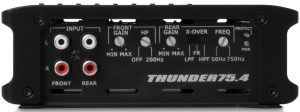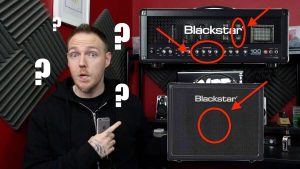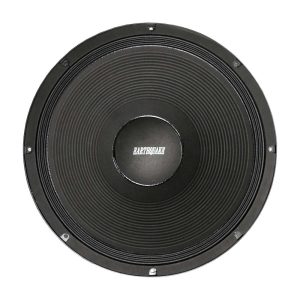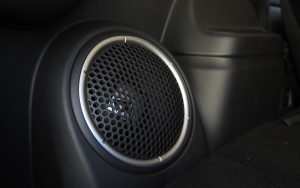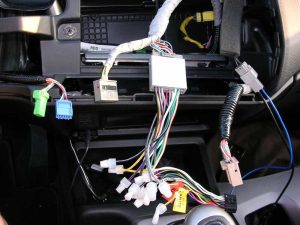When it comes to setting up a powerful car stereo system, every detail matters, and one crucial aspect that often goes overlooked is the choice of wire gauge for your subwoofer. The right wire gauge ensures optimal performance and prevents potential issues. In this guide, we’ll explore the question “What gauge wire should I use for my subwoofer?” and provide you with essential insights to make an informed decision.
Contents
Understanding Wire Gauge: The Basics
Wire gauge refers to the thickness of the wire, which affects its ability to carry electrical current efficiently. Thicker wires, denoted by lower gauge numbers, offer less resistance and are better suited for transmitting power over longer distances or for high-powered applications like subwoofers.
Factors to Consider
Power Requirements
The power rating of your subwoofer is a critical factor in determining the appropriate wire gauge. Higher-powered subwoofers necessitate thicker wires to ensure that sufficient power reaches the subwoofer without significant loss due to resistance.
Distance
Consider the distance between your amplifier and subwoofer. If it’s a short distance, a slightly thinner wire might suffice. However, for longer distances, using a thicker wire can help minimize power loss along the way.
Impedance
The impedance of your subwoofer (usually 2, 4, or 8 ohms) influences the current flow. Lower impedance subwoofers draw more current, so they require thicker wires to prevent voltage drops and ensure optimal performance.
Optimal Wire Gauges for Subwoofers
1. 8-10 Gauge Wire
For subwoofers with a power rating of up to 300 watts and a distance of under 12 feet, an 8 to 10 gauge wire should suffice. This range is suitable for most standard car audio setups.
2. 4-6 Gauge Wire
Subwoofers with power ratings between 300 to 1000 watts and distances between 12 to 20 feet benefit from 4 to 6 gauge wires. These wires handle higher power levels effectively.
3. 0-2 Gauge Wire
High-powered subwoofers exceeding 1000 watts and longer distances of over 20 feet require 0 to 2 gauge wires. These heavy-duty wires ensure minimal power loss and optimal performance.
- To determine the optimal wire gauge for your subwoofer setup, you can use the following formula:
Wire Gauge = (Square Root of (Power × Distance)) / Impedance
Where:
Power is the power rating of your subwoofer in watts.
Distance is the distance between the amplifier and subwoofer in feet.
Impedance is the impedance of your subwoofer (2, 4, or 8 ohms).
Simply calculate the result using this formula, and then round up to the nearest whole number to get the recommended wire gauge.
Please note that this formula provides a general guideline and should be used as a starting point. If you’re unsure or have a complex setup, consulting with a car audio professional is always a good idea.
Benefits of Using the Right Wire Gauge
Optimized Performance: Choosing the right wire gauge minimizes resistance, allowing the subwoofer to receive the intended power for optimal sound quality.
Preventing Voltage Drop: Inadequate wire gauge can lead to voltage drops, causing distortion and affecting the subwoofer’s performance. Using the correct gauge mitigates this issue.
Protecting Equipment: Proper wire gauge prevents the amplifier from working harder than necessary to deliver power, which can extend the lifespan of your equipment.
Safety: Using the right wire gauge reduces the risk of overheating and potential fire hazards, ensuring the safety of your car and its occupants.
Installation Tips
- Measure Twice: Accurate measurement of the distance between the amplifier and subwoofer is crucial for choosing the right wire gauge.
- Consider Future Upgrades: If you plan to upgrade your subwoofer or amplifier in the future, it’s wise to choose a slightly thicker wire than your current setup requires.
- Quality Matters: Invest in high-quality, oxygen-free copper wires. These wires offer better conductivity and are more resistant to corrosion.
Conclusion
Selecting the appropriate wire gauge for your subwoofer is a vital step in creating a top-notch car stereo system. Consider the power requirements, distance, and impedance to determine the optimal gauge for your setup. Using the right wire gauge ensures peak performance, prevents voltage drops, and safeguards your equipment. Don’t forget to follow proper installation practices and refer to reliable resources for a comprehensive understanding of your car stereo system.
Remember, a well-considered choice today will result in a remarkable auditory experience on the road tomorrow.
It’s essential to understand the complete car stereo setup. To identify positive and negative speaker wires in your car, follow this guide.

